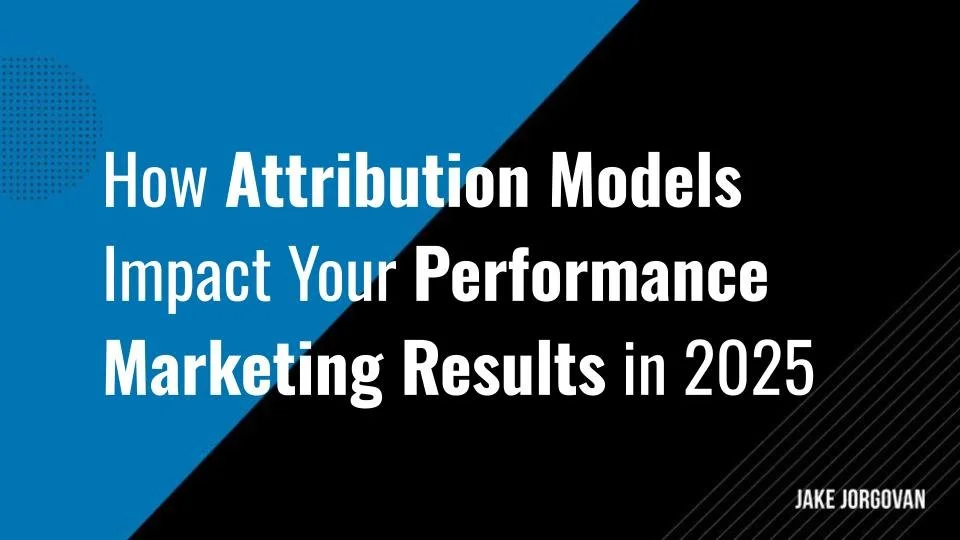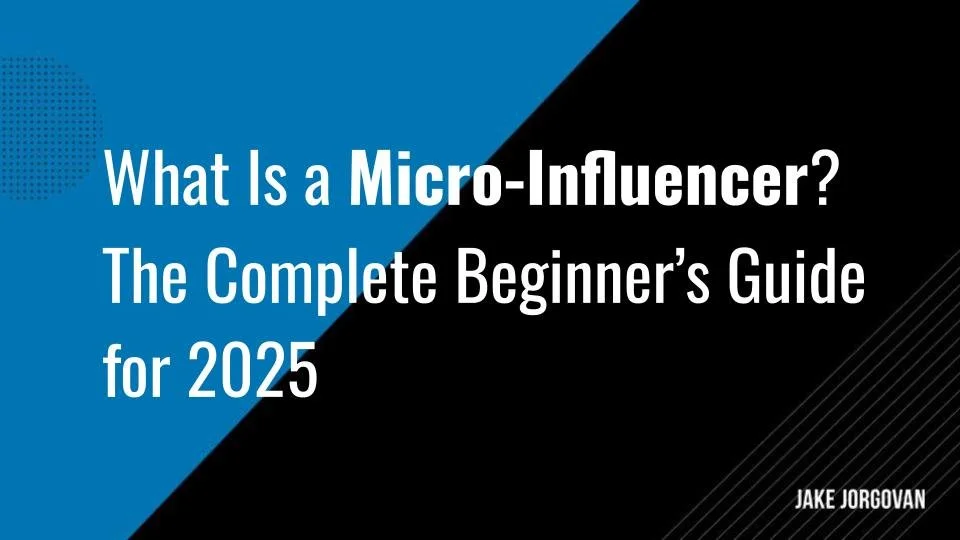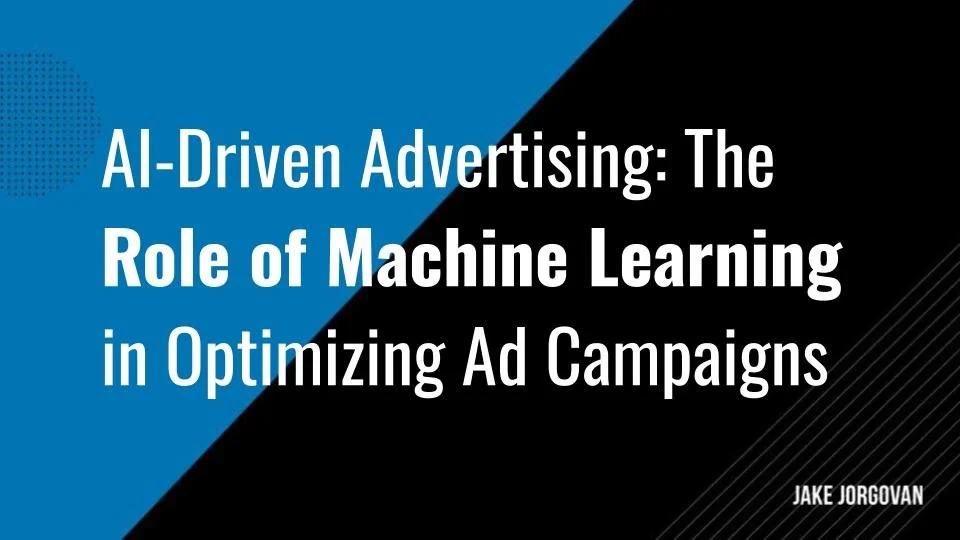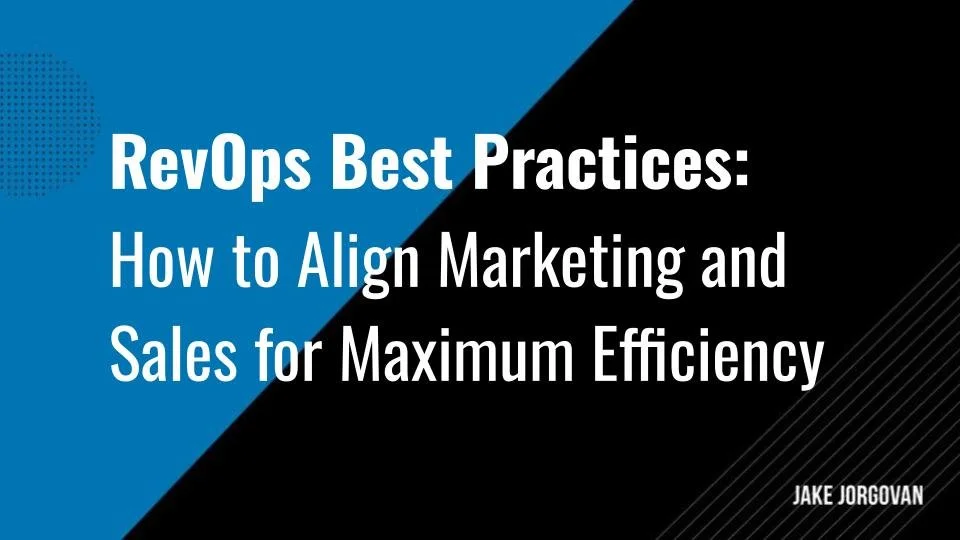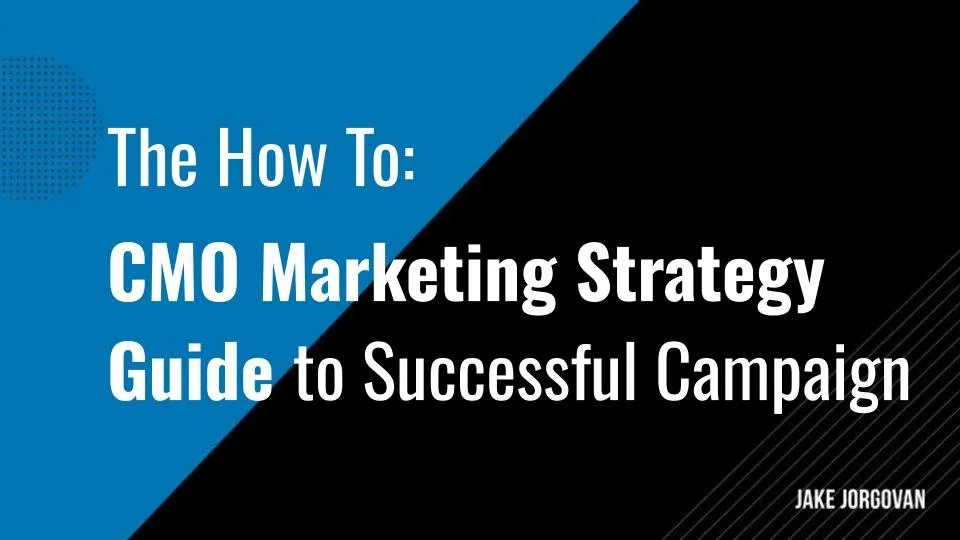How Paid Social Advertising Drives Demand for Health & Wellness Brands in 2025
The health and wellness industry is booming, set to hit almost $9 trillion by 2028.
People are paying more attention to their well-being and preventive care than ever before.
Paid social advertising is a game-changer for wellness brands looking to break into this growing market.
Creating targeted campaigns on various platforms is your key to ramping up consumer interest and engagement.
In this article, we'll dive into how smart paid social advertising can scale up your brand’s visibility, build customer loyalty, and increase your sales.
Let’s dive in.
P.S. Want to find the best marketing partners for your wellness brand? Check out our Top 31 Health and Wellness Marketing Agencies to discover expert teams that can refine your social media strategy.
The Growing Demand for Health & Wellness Brands
Health and wellness brands are seeing more demand as people take health into their own hands.
Digital tools are a big part of this – over 1.3 billion people are expected to use fitness trackers, online consultations, and other health tech in 2024.
Price matters too: 21% of online shoppers buy health products mainly because they’re cheaper.
Meanwhile, drugstore promotions have dropped 37% in the past two years, making online shopping even more appealing.
With more brands fighting for attention, paid media has become a must for standing out and driving sales.
What Is Paid Social Advertising
Paid social advertising means you’ll be paying to display ads on social media platforms. As such, you’ll be targeting specific audiences to promote your products or services.
This contrasts with your organic social media efforts. In that case, content is shared without financial investment because you’re mostly relying on natural engagement.
"Paid advertising allows businesses to very quickly reach thousands of people. This guaranteed reach is compelling compared to organic marketing, in which the reach isn’t guaranteed." - Shopify
But which platforms should you focus on?
Let's break down the key social media channels for paid advertising:
Key Social Media Platforms
Health and wellness brands get the best results on these social media platforms:
Facebook: Offers a broad demographic reach and advanced advertising options, so you can use it for a diverse audience. In 2024, 42% of marketing leaders reported using paid ads on Facebook, which shows Facebook’s not dead.
Instagram: Its visually appealing format is ideal for showcasing wellness products and sharing inspiring content. Instagram Reels and Stories are particularly good, and you can also use Instagram Storefront to have people purchase your items directly.
TikTok: Caters to a younger audience, offering creative avenues to present wellness brands informally. Use TikTok Shop ads – Betterbrand, for example, got a GMV of $1M in less than one quarter, 80% of which was driven by TikTok ads. TikTok shop ads also accounted for 10% of their Amazon sales.
LinkedIn: This channel gives you a professional network, which is great for B2B marketing and establishing authority in the health sector. LinkedIn works especially well for brands promoting wellness experiences or wellness retreats in B2B.
Before you choose, remember that TikTok shows a 6.8% average monthly follower growth rate for wellness brands. That kind of growth indicates significant audience engagement compared to other platforms.
Why Use Paid Social Advertising for Health & Wellness Products?
Paid social advertising offers health and wellness brands several advantages:
Precise audience targeting: Reach specific demographics interested in health topics. You’re basically ensuring your message connects with the right people, thus decreasing CAC and scaling ROI.
Enhanced brand awareness: Promote products to a broader audience, increasing visibility and recognition.
Improved engagement rates: On social media, you can actually engage users through interactive ads. So it’s not just about short-term returns, but about building a deeper connection with your brand and thus increasing your long-term returns as well.
Measurable results: Social media channels track your ad performance in real-time so you can make data-driven adjustments to optimize campaigns.
In fact, 89% of healthcare marketers incorporate paid search advertising into their strategies because it works so well in driving consumer demand.
But how can you make the most of it?
That brings us to the next point:
Key Strategies and Best Practices in Paid Social Advertising
Let's cover key strategies for paid social success:
Data-Driven Campaign Development
Set clear goals and track the right metrics. Then, analyze customer data to spot trends and preferences. Use what you learn to create targeted marketing strategies. Of course, keep an eye on performance and tweak your approach as needed. This keeps engagement high and boosts conversions.
Pro tip: Go beyond basic metrics like clicks and impressions. Analyze customer journey data to see how paid social ads influence conversions across touchpoints. Use multi-touch attribution models to understand which ad formats and messaging drive actual purchases, not just engagement. This helps you allocate budget to what truly works.
Creative Optimization
A/B testing helps you refine ad performance by comparing different creatives, headlines, and visuals. Test one variable at a time – copy, imagery, or CTA – to see what resonates best with your audience. Then, use platform analytics to track engagement and conversion rates.
Meta reports that testing multiple creatives can lower CPA by up to 32%. This goes to show that it’s always best to adjust based on real data, not assumptions.
Pro tip: Incorporate multivariate testing to evaluate multiple elements – such as headlines, images, and calls-to-action – simultaneously. This approach uncovers the most effective combinations, optimizing ad performance more efficiently than testing each element in isolation.
Budgeting and Bid Strategies
Set your budget based on what you aim to achieve and how different platforms are performing. Kick things off with a test budget to see what's working, then put more money into the successful parts. Try using tools like Meta’s Advantage+ or Google’s Smart Bidding to make your spending more effective.
Tweak your bids depending on who's seeing your ads, where your ads show up, and the time they're displayed. Keep an eye on your cost-per-click (CPC) and return on ad spend (ROAS) to continuously improve your strategy.
Pro tip: Shift more budget toward high-intent audiences by analyzing post-click behavior, not just ad engagement. Look at how different segments interact with your site – time on page, add-to-cart rates, or lead form completions. If an audience clicks but doesn’t convert, refine your targeting or landing page instead of increasing bids blindly.
Leverage Influencer Partnerships
Working with influencers gets you straight into the mix with audiences who are already hooked and engaged. This gives your brand a big credibility – and of course, awareness – boost. When people you trust vouch for something, it really sways what you decide to buy. Plus, throwing user-generated content into the mix can ramp up engagement even more. In fact, websites that show off content from their users see a nearly 30% bump in sales conversions.
“Perhaps the biggest advantage of using influencers is that you have the opportunity to choose people who are part of your target market, or who appeal to your target market.” - Neal Schaffer, digital marketing and social media speaker
Pro tip: Collaborate with micro-influencers who, despite having smaller followings, often boast up to 60% higher engagement rates and more loyal audiences. Additionally, consider hosting user-generated content (UGC) contests to encourage your audience to share their personal experiences with your products, fostering a sense of community and trust.
Use Retargeting for High-Intent Audiences in Health & Wellness
Retargeting lets you reach people who already showed interest in your brand. Instead of a one-size-fits-all message, you can tailor your outreach based on how they interacted – whether they browsed your site, left something in their cart, or visited again.
Using Meta's Advantage+ helps you focus on folks who clicked your ads but haven't bought yet.
Custom audiences mean you can address specific concerns and encourage them to take the next step.
In fact, retargeting can boost conversions by up to 150%, turning curiosity into sales.
Compliance & Ad Restrictions in Health & Wellness Paid Ads
The first way to stay compliant with health and wellness ad rules is to know each platform’s limits. Facebook restricts supplement claims and bans promises of instant results, making it tricky for supplement brands. TikTok doesn’t allow before-and-after images or weight loss ads to prevent unrealistic portrayals.
Of course, also stick to FTC guidelines – keep your claims factual and transparent. Write clear, credible copy that engages without crossing regulatory lines.
Remember: Pay attention to platform feedback and tweak your approach as needed. This keeps your ads running and your account in good standing.
Performance Benchmarks: What CTR, CPA, & ROAS Should You Expect?
Knowing how well your health and wellness ads perform can really shape your marketing strategy.
On TikTok, ads usually get a click-through rate (CTR) of 0.84%. The cost per click (CPC) swings from $0.20 to $2.00, affected by your bidding strategy and who you're targeting.
On Facebook, the average CTR is a bit higher at 0.90%, with a typical CPC of $1.86 across different industries.
YouTube ads see a CTR of about 0.65%.
Return on ad spend (ROAS) can vary, but hitting a 3:1 ratio – where every dollar spent brings in three dollars in revenue – is generally seen as solid. The type of campaign matters, too; retargeting campaigns often pull in higher CTRs and lower CPCs compared to those targeting new (aka or 'cold') audiences.
How to Scale Paid Social for a Health & Wellness Brand
Scaling paid social takes a steady hand. Before increasing budgets, make sure your ROAS holds, conversion rates stay consistent, and customers keep coming back.
Expand with horizontal scaling by testing new audiences, or push winning campaigns further with vertical scaling. As acquisition costs climb, sharpen your targeting, refresh creatives, and experiment with new placements to stay profitable. AI-driven shopping campaigns help automate bidding and budget allocation for better efficiency.
Pro tip: Subscription brands should focus on predictive lifetime value, while one-time purchase brands should double down on upsells and retargeting.
Stay data-driven, stay in control, and don’t burn ad spend chasing vanity metrics.
Paid Social Advertising Examples in the Health & Wellness Niche
Several health and wellness brands have effectively utilized paid social advertising to engage their audiences and promote their products:
1. Bala
Known for its functional fitness equipment, Bala is great at displaying its variety of products through interesting visuals and strong colors.
Their Meta ads can really tease out your curiosity and lead you on a path of product discovery.
We also appreciate their clear call to action that prompts users to explore the website. That’s where a user-friendly interface and compelling product descriptions make the purchasing process seamless.
2. Hims & Hers Health
Initially focusing on men's health products, Hims expanded its line to include weight-loss medications for both men and women.
Their aggressive marketing strategy, which you can see in the Super Bowl ad below, connects emotionally with consumers by addressing their very real health concerns.
This approach has contributed to the company's growth, with a market cap reaching $9 billion and a very profitable recent quarter.
3. Les Mills
This global fitness leader excels with immersive, highly targeted video ads on Facebook and Instagram, featuring clear calls to action and enticing offers, such as a free fourteen-day trial.
In 2023, Les Mills launched the "Choose Happy" campaign, partnering with actor Brett Goldstein to encourage Gen Z to overcome exercise barriers.
This initiative achieved a 53% return on investment and a 700% return on TikTok, blending organic and paid strategies to maximize brand visibility.
How to Win in Paid Social: Smarter Ads for Health and Wellness Brands
Paid social ads help health and wellness brands get noticed and build trust. With targeted campaigns, you can put your product in front of the right people and use smart data to see what works.
Keep it simple: blend influencer posts, text messaging, and affiliate partnerships. Focus on quality ingredients and the digestive health benefits your customers care about, and show off your product with engaging 3D demos and posts.
As you scale up, check your numbers and fine-tune your ads. Consider using retail media networks to reach new audiences and add another revenue stream. Keep testing and tweaking your strategy, and you’ll stay ahead.
PS: Want expert help to make your paid social ads more effective? Check out our Top 22 Paid Media Agencies list to find the right partner and maximize your results.
Frequently Asked Questions
How does paid social advertising work?
Paid social advertising puts wellness brands in front of high-intent wellness consumers. Platforms use AI to serve ads to potential customers based on behavior, demographics, and online presence. Marketers set budgets, bid for placements, and optimize ads using real-time performance data. This approach lets brands push content strategy forward with interactive content, video content, and user-generated content. Paid social drives demand for products faster than organic reach, making it an effective strategy for scaling.
How does paid social media allow marketers to target their most relevant customers?
Social media platforms collect deep audience insights, letting marketers segment by interests, habits, and engagement levels. Identity-based advertising sharpens targeting, ensuring only health-conscious consumers see ads. Marketers refine messaging based on economic uncertainty, trends in social proof, and ethical sourcing concerns. With dynamic creative optimization, campaigns adapt to customer engagement levels, leading to deeper connections.
What is one benefit of paid social media advertising regarding lead time?
Unlike content marketing or organic outreach, paid social advertising delivers results in a matter of days or even hours. With the right social media strategy, ads reach a wider audience fast, shortening lead time and accelerating consumer engagement. Use retargeting tools to fine-tune your audience segments and, therefore, optimize for customer experience even better. AI-driven ad placements further improve your ROI.















